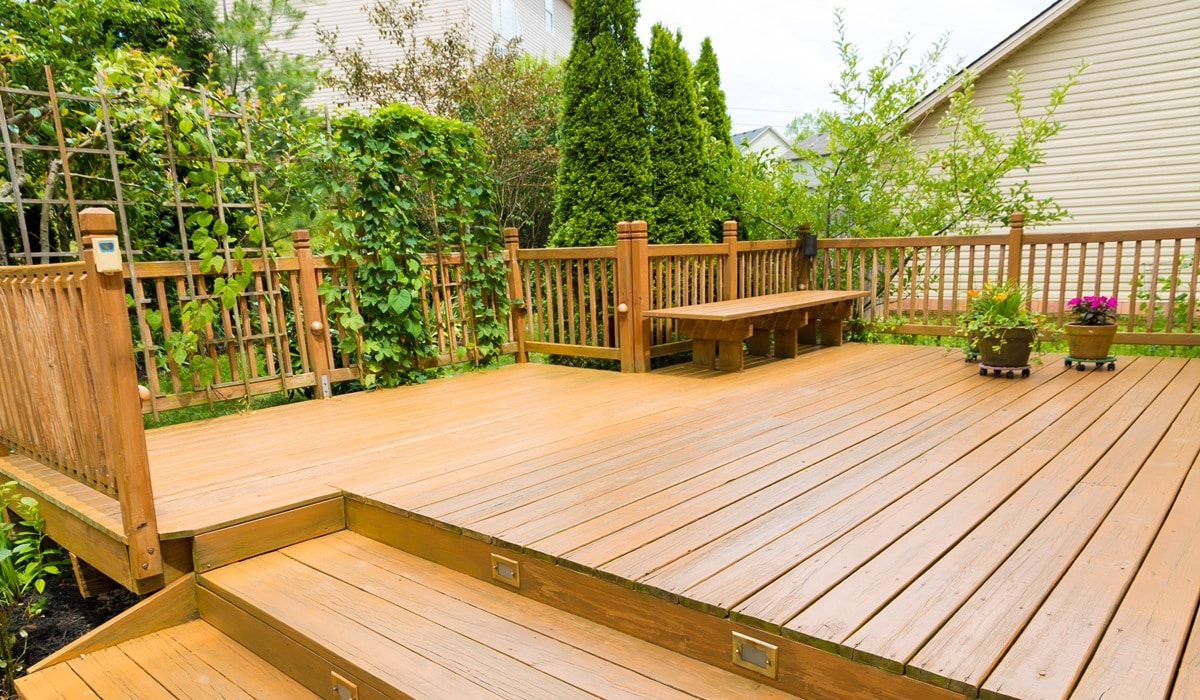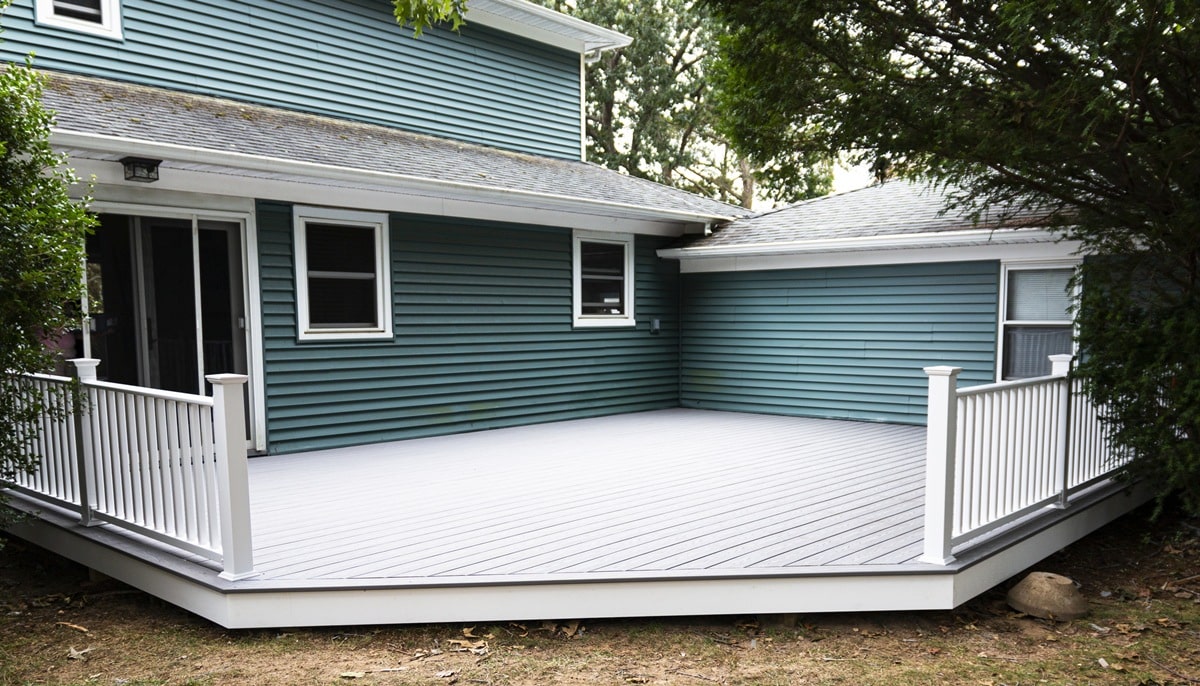When planning a deck painting project, one of the biggest decisions homeowners face is whether to paint or stain a deck. This choice isn’t just about looks—it affects durability, maintenance, and how your deck handles weather over time. Making the right call can save you time and money, and help your deck look its best for years to come.
Key Takeaways:
- Paint lasts longer but requires more prep and may peel over time.
- Stain offers a natural look and is easier to apply and reapply.
- Climate, wood type, and foot traffic are key factors to consider.
- Your desired look and maintenance level should guide your choice.

What’s the Difference Between Paint and Stain?
Before diving into which option is better, let’s look at what each product does.
- Paint: Paint creates a solid, opaque layer on the surface of your deck. It completely covers the wood grain and provides a uniform color and finish. It also forms a barrier against moisture and UV rays.
- Stain: Stain penetrates the wood and enhances its natural texture. It’s available in varying opacities—from clear to solid—and allows the grain and natural character of the wood to show through.
Pros and Cons of Painting a Deck
Pros:
- Longer lifespan: High-quality deck paint can last 8-10 years with proper prep and maintenance.
- Wide color variety: You can match or contrast with your home’s exterior.
- Strong protection: Paint provides a solid barrier against moisture and UV rays.
Cons:
- Peeling and chipping: Over time, paint can crack or peel, especially in high-traffic or high-moisture areas.
- More prep work: Requires a completely clean and dry surface. Old paint may need to be removed.
- Harder to switch: Once you paint, it’s tough to go back to stain without significant effort.
Pros and Cons of Staining a Deck
Pros:
- Natural beauty: Enhances wood grain and natural patterns.
- Easier application: Usually requires less prep than painting.
- Simple maintenance: Easier to clean and reapply than paint.
Cons:
- Shorter lifespan: Transparent stains may only last 1-3 years. Solid stains can last 4-5 years.
- Limited color range: More natural tones and fewer bold options.
- Less protection: Stains offer less UV and moisture protection than paint.
When to Choose Paint
Painting is a great choice when:
- You want a bold, consistent color.
- Your deck wood is older or in rough shape and needs extra coverage.
- You’re okay with longer prep and maintenance cycles.
- You live in a wet or sunny climate and want maximum protection.
When to Choose Stain
Staining is best when:
- You want to show off natural wood grain.
- Your deck is new or made from high-quality wood.
- You prefer quicker touch-ups and easier application.
- Your climate is moderate with less extreme sun or rain.

Consider Your Climate
Climate plays a big role in how each option performs. In hot, sunny areas, paint may blister and peel over time. In moist or rainy regions, paint holds up better but can trap moisture if not applied correctly. Stain, especially semi-transparent or clear types, allows the wood to breathe but may need more frequent reapplication.
Think About Maintenance
Ask yourself: how much time do you want to spend maintaining your deck?
- Painted decks require periodic scraping, sanding, and repainting.
- Stained decks often just need cleaning and a fresh coat.
Also, keep in mind that switching from stain to paint is fairly easy. Switching from paint to stain? Much harder.
What Kind of Wood Do You Have?
- Softwoods like pine benefit from paint because it offers more protection.
- Hardwoods like cedar or redwood look beautiful with stain.
Some wood types don’t take paint well and can peel faster. If your deck is made of pressure-treated wood, wait a few months before applying anything to allow it to dry out.
Foot Traffic and Use
- High-traffic decks (grilling areas, kids’ play zones) may do better with stain, since touch-ups are easier.
- Low-traffic decks may maintain a painted finish longer.
If your deck gets a lot of use, durability and ease of repair should be priorities.
Cost Considerations
Both options vary in cost, but here’s a general idea:
- Paint: $30-$60 per gallon; lasts longer but requires more prep.
- Stain: $20-$50 per gallon; easier to apply but needs more frequent reapplication.
Add in the cost of cleaning products, brushes, rollers, and other tools, and the difference evens out over time depending on how often you recoat.
Final Verdict: Should You Paint or Stain a Deck?
There’s no one-size-fits-all answer. Your decision should come down to:
- The look you want
- The type of wood
- Your local climate
- How much maintenance you’re willing to handle
- How long you want the finish to last
If you love bold color and long-term protection, paint may be the better fit. If you prefer a natural look and simple upkeep, stain is likely your best bet.
Want to make the best call for your next deck upgrade? Call Hartzell Painting at 954-280-6327 for expert guidance on choosing the right finish. We’ll help you understand the pros and cons so your deck not only looks great but lasts longer too.

